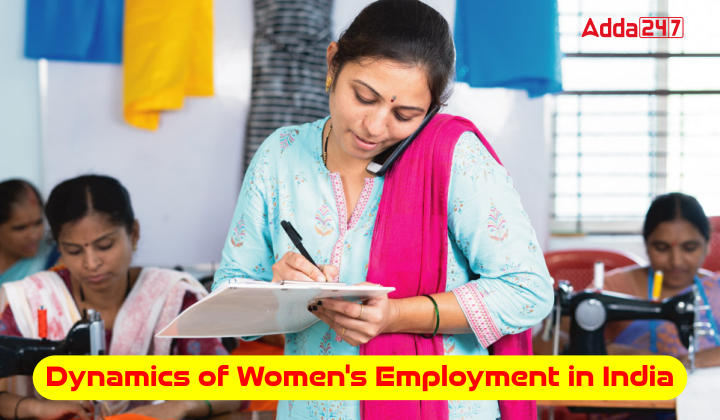Table of Contents
India’s journey through changing trends in women’s employment has been marked by significant fluctuations and intense debate. Drawing from the National Sample Surveys (NSS) and Periodic Labour Force Surveys (PLFS), a notable pattern emerges: women’s work participation rate experienced a drop from around 42% between 1993-94 and 2004-05 to 28% in 2011-12, further descending to 22% in 2017-18, only to witness a surprising upsurge to 36% by 2022-23.
Divergent Interpretations
This trajectory has spawned two main narratives:
- Pessimistic View: Interprets the initial decline as an indication of dwindling job availability and attributes the subsequent increase to escalating poverty.
- Optimistic Perspective: The initial drop as a sign of prosperity, enabling women to prioritize family, with the later rise reflecting enhanced employment opportunities.
Closer Examination
Delving deeper into the work participation of women aged 25-59 reveals three primary categories: self-employment in agriculture, non-agricultural self-employment, and wage or salaried work. The most significant shift observed is in the agricultural domain, where women’s involvement on family farms saw a dramatic decrease from 23% to 10% between 1993 and 2017, only to rebound to 23% in recent years.
Moreover, the government is soliciting information on various aspects, including the establishment of an internal complaints committee (ICC) to prevent sexual harassment at the workplace (POSH), provision of childcare facilities, implementation of equal pay for equal work, availability of flexible or remote working hours for women, and the provision of transportation facilities during late hours.
Challenges of Jobless Growth in India
According to government data analyzed by a university, India’s economy added nearly 57 million jobs in the five years leading up to June 2022, expanding the workforce to 493 million. However, a significant gap persists, with 35 million people remaining unemployed. The research emphasizes that the growth in India has been less job-intensive compared to the average across developing countries.
The report underscores a long-term trend, noting that GDP growth and employment growth in India have been uncorrelated. This suggests that policies aimed at accelerating GDP growth may not necessarily lead to a proportional increase in job creation.
Of particular concern is the high unemployment rate among the youth, with graduates below the age of 25 experiencing an unemployment rate as high as 42.3% as of June 2022. However, as graduates age, the unemployment rate decreases, dropping to 22.8% for the 25-29 age group and further to 9.8% for the 30-34 age group.
Challenges in Measurement
Despite India’s economic strides, female labor force participation remains notably low. For those employed, the quality of employment is a critical factor encompassing skill development, social protection, work-life balance, income, and job security.
The reliability of labor force surveys is under scrutiny, as the methodology often fails to accurately capture the multifaceted nature of rural women’s work. The nuanced approach previously adopted by experienced field investigators has been compromised by changes in recruitment practices, leading to a decline in data quality.
The Path to Improvement
To uplift the quality of women’s employment in construction, several interventions are crucial:
- Social Protection: Implementing childcare facilities at workplaces can alleviate the unpaid care burden, enabling women to focus on their professional roles.
- Skills Training: Empowering women with skills and training is essential for their progression to higher-quality, better-paid positions within the sector.
- Workplace Safety: Enhancing safety protocols and providing necessary equipment can safeguard women from occupational hazards.
The Way Forward
Amidst debates over the reasons behind these trends, the focus should shift towards addressing the stagnation in the proportion of women engaged in wage labor and entrepreneurship outside agriculture. Enhancing opportunities in non-agricultural sectors could pave the way for more equitable and rewarding employment for women across India.



 TSPSC Group 1 Question Paper 2024, Downl...
TSPSC Group 1 Question Paper 2024, Downl...
 TSPSC Group 1 Answer key 2024 Out, Downl...
TSPSC Group 1 Answer key 2024 Out, Downl...
 UPSC Prelims 2024 Question Paper, Downlo...
UPSC Prelims 2024 Question Paper, Downlo...




